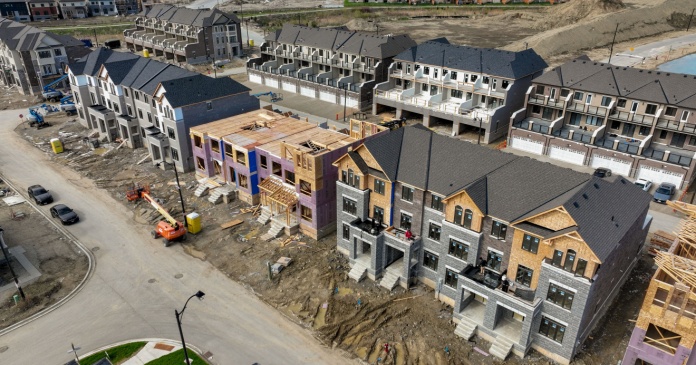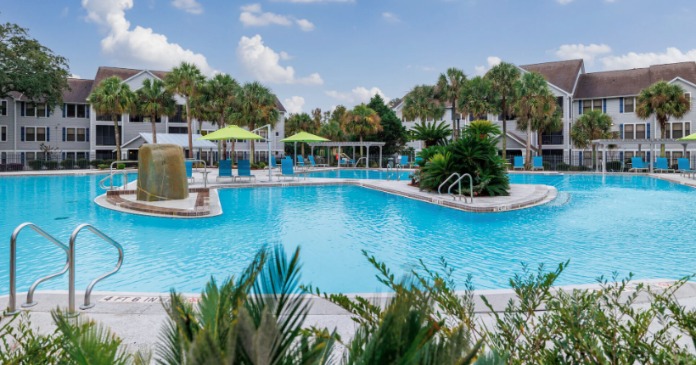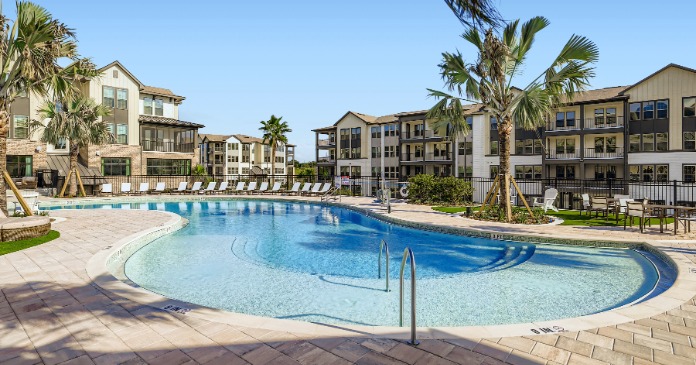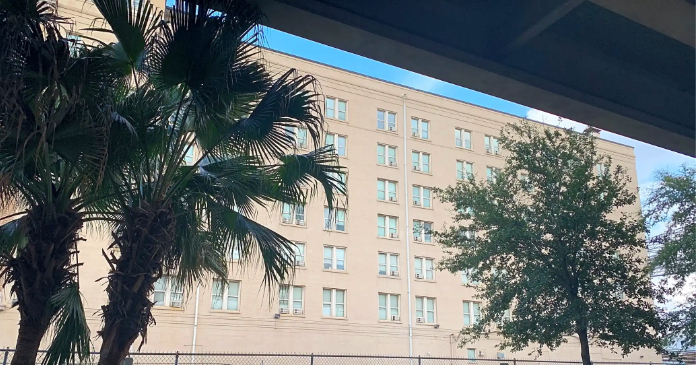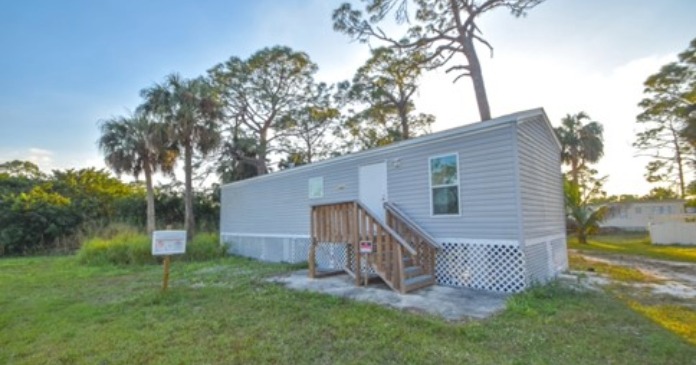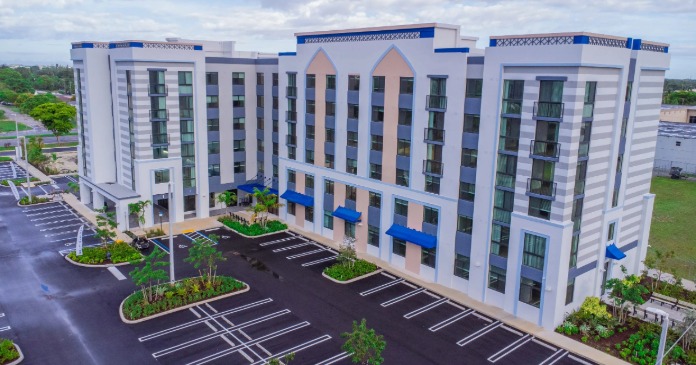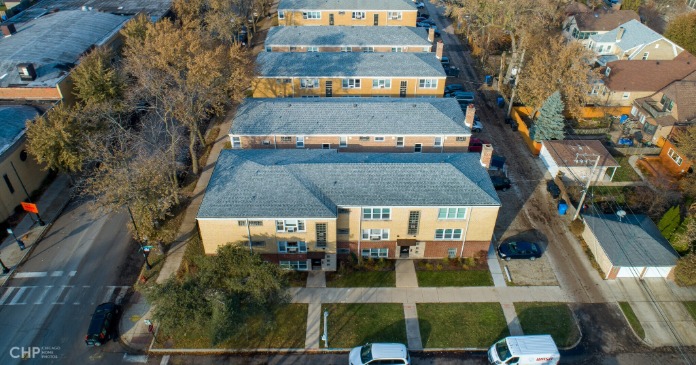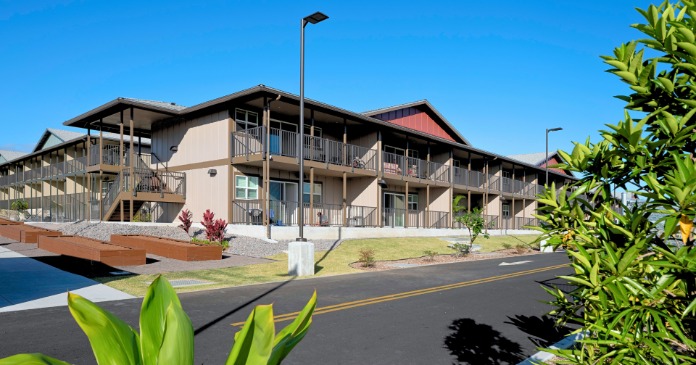New data from CBRE’s H1 2025 Cap Rate Survey suggests that overall cap rates may be poised for modest compression while multifamily cap rates are expected to remain largely unchanged. Despite heightened uncertainty over tariffs, interest rate volatility, and fiscal health, multifamily assets continue to attract investor optimism. Multifamily was the commercial real estate sector most cited by survey respondents for highest expected performance over the next decade.
Multifamily seen as a bright spot
CBRE’s report gathered 3,600 cap rate estimates for more than 50 metro areas and from over 200 CBRE real estate professionals who were surveyed in early June. The results describe a market that, while fluid, is defined by resilience and stability.
In the latest survey, multifamily cap rates moved largely in unison with those of other property types. However, more than 57 of the respondents ranked multifamily first for anticipated investment performance over the next ten years, displacing the prior frontrunner, industrial.
The report shows all-property cap rates declining slightly, with a 9 basis point average drop in H1 2025, even as Treasury yields swung between 4.8 percent and 4.2 percent during the first half of the year. However, when asked what direction they expected cap rates to take over the next 6 months, a significantly smaller portion of respondents said they expected multifamily cap rates to fall than did in the last survey 6 months ago. The share dropped from over half of respondents to less than a quarter. The biggest increase came in the share of respondents who expected no change in cap rates, with well over 70 percent giving this answer compared to about 44 percent in the last survey.
Multifamily cap rate trends
Multifamily cap rate estimates, both infill and suburban, largely held steady or compressed slightly from H2 2024 to H1 2025. In gateway markets, stabilized Class A infill assets are trading at cap rates between 4.5 percent and 5.75 percent, with New York City and Boston recording compression to the low end of prior range. Suburban multifamily mirrored this stability, with slightly higher spreads reflecting location and asset variation. For example, cap rates for Las Vegas suburban Class A stabilized assets ticked down to 5.0 percent- 5.25 percent from their previous range of 5.0 percent- 5.5 percent.
The Midwest and South saw modest tightening as well, with major metros like Chicago and Dallas showing ranges narrowing by up to 25 basis points for both infill and suburban product. Western markets maintained cap rates generally within 4.25 percent- 5.75 percent for Class A stabilized, and 4.5 percent- 5.25 percent for value-add opportunities, underlining investor confidence in steady cashflows and rent growth potential through 2025.
Selected H1 2025 multifamily cap rate ranges – percent
| Market | Infill Class A Stabilized | Infill Class A Value-Add | Suburban Class A Stabilized | Suburban Class A Value-Add |
| New York City | 4.75-5.25 | 5.5-6.0 | – | – |
| Boston | 4.5-5.0 | 4.5-5.25 | 5.0-5.5 | 5.25-5.75 |
| Las Vegas | 5.0-5.25 | 5-5.25 | 5.0-5.25 | 5.0-5.25 |
| Atlanta | 4.5-5.0 | 4.5-5.0 | 4.5-5.0 | 4.5-5.0 |
| Dallas | 4.25-4.75 | 4.75-5.25 | 4.5-5.25 | 4.75-5.25 |
| Phoenix | 4.25-5.0 | 4.5-5.0 | 4.75-5.25 | 4.75-5.25 |
| San Jose | 4.25-4.75 | 4.5-5.0 | 4.25-4.75 | 4.5-5.0 |
Sales volume outlook
April’s announcement of unexpectedly large tariffs and subsequent trade policy reversals injected uncertainty into the market. According to CBRE, over half of surveyed professionals expect commercial real estate sales volumes to decrease slightly in 2025, with another 16 percent anticipating significant declines. However, multifamily assets benefit from strong rental demand, balanced construction activity, and investor preference for defensive yield, mitigating much of the disruption felt in other asset classes.
Even as risk spreads widen in the troubled office sector, multifamily’s cap rate spreads remain tight. This indicates that market participants may be arriving at a consensus on pricing. Tight spreads are particularly prevalent among high-quality, stabilized assets, with value-add product following suit in many markets. All of this reflects industry expectations that rent growth and NOI will outweigh macro headwinds through year-end.
CBRE’s mid-year survey paints a picture of measured optimism for U.S. multifamily investments. While volumes may soften under the pressure of tariffs and economic volatility, the sector’s fundamentals—underscored by cap rate stability, rental growth prospects, and defensive investor preference—set the stage for sustained outperformance in the second half of 2025.
The full report from CBRE can be found here.
Definitions and methodology
Survey cap rates reflect the expected yield (NOI/acquisition price) for stabilized properties leased at market rates with vacancy levels near market averages. Value-add cap rates measure stabilized yield after property enhancement and acquisition costs. Estimates arise from recent trades and broker insights, with each range subject to asset qualities and location specifics.



